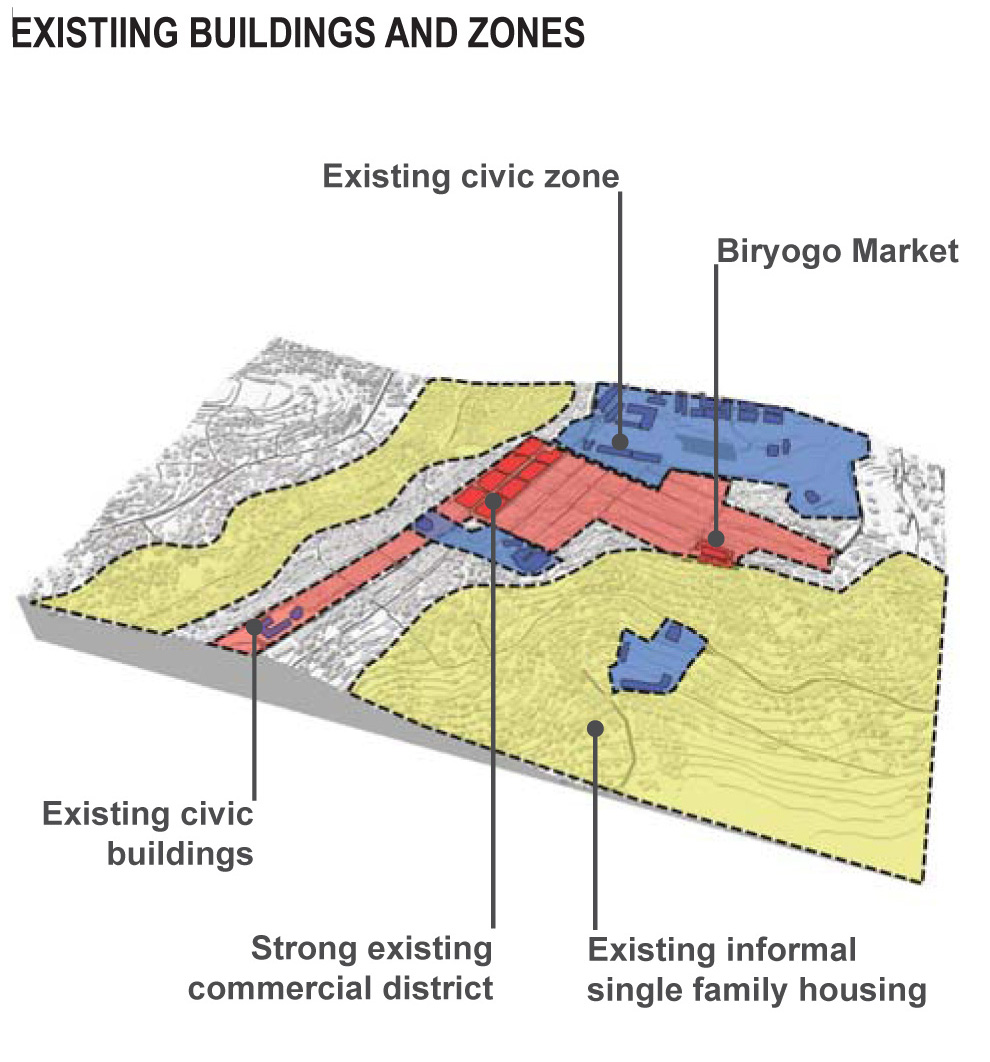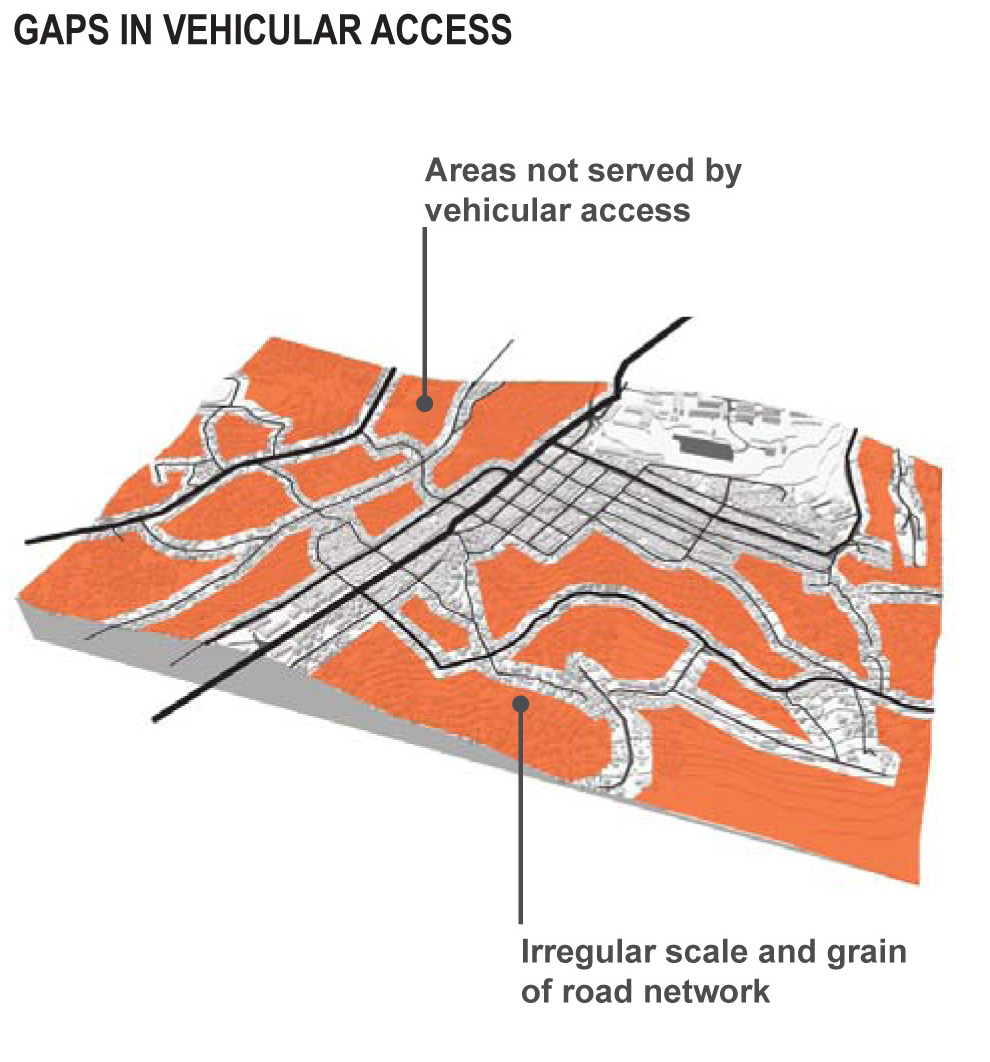KIGALI SUSTAINABILITY METRICS: Exploring Performative Approaches to Urbanism
Kigali, Rwanda
Carnegie Mellon University
Group Studio Project
Summer 2012
Graphics, site plans, and diagrams designed in Illustrator. 3D models designed in SketchUp and rendered in Illustrator. Perspectives drawn by hand and rendered in Photoshop.
Objective
The focus of the summer urban design studio was to analyze existing zoning codes and planning tools in order to provide recommendations to meet the sustainability goals of the City of Kigali. While the country is moving towards urbanization and emerging as a global competitor, lack of formal planning, limited infrastructure, existing housing stock, and strong cultural traditions are opportunities and constraints that the country is currently facing and were addressed in the design process. Rather than prescribe specific design solutions, the studio took a performance-based approach as a means to work with existing planning efforts and regulatory documents and create a comprehensive yet flexible planning tool for the City.
Design Process
The study began with an audit of existing zoning codes and the City’s comprehensive master plan to determine constraints, opportunities, and goals of the existing planning tools. From here, the studio outlined eight major themes which were commonly found within the master plan documents. With the overarching goals of economy, equity, and ecology as guiding principles, the studio team developed a series of sustainability metrics and recommendations under each of the eight themes to better align design visions and sustainability goals with existing conditions and market demands. These guidelines were based off of current guidelines such as LEED ND and ASLA Sustainable Sites Initiative Guidelines & Performance Benchmarks as well as recommendations developed by the MUD studio based on the studio’s trip to Kigali.
Deliverables
In order to test the effectiveness of the sustainability metrics in the context of Kigali and illustrate a variety of design scenarios, each of the measures and criteria were evaluated at the district, block, and parcel/street level scales. The results of this analysis, rather than serving as an urban design solution, demonstrated how the city could develop under the current zoning code and subsequent sustainability metrics and will serve as a comprehensive tool that can be used by Kigali city planners and its residents.
Tasks Completed
Individual contribution included testing existing zoning codes and planning tools to develop sustainability metrics. Tested and refined proposed benchmarks at district, block, and parcel level through modeling exercises. Drew parcel-level perspectives by hand and rendered in Photoshoop.
Nyarugenge District zoning map





